Inside: Teach students to be polite and have good manners with this hands on activity bundle to make character education fun.
Even before my kids could speak full sentences, I was teaching them manners.
I’d hand them their paci and say to them/for them, “Thank you, Mama.”
As they got older, we taught them their pleases and thank yous and your welcomes and now that my kids are older I’m teaching them the nuances of ‘Excuse Me’ versus ‘I’m sorry’ and saying it like you mean it.
I’m sorry with an eye roll doesn’t fall into the kind and polite category nor does a sarcastic thank you.
I want my kids to be polite and gracious and grateful in their lives and to make that happen, we have to intentionally teach them how and when to be polite.
Related: How to teach our kids to be kind without being taken advantage of
One easy way to teach our kids how to be polite and use their manners is to make it fun with some hands on learning activities.
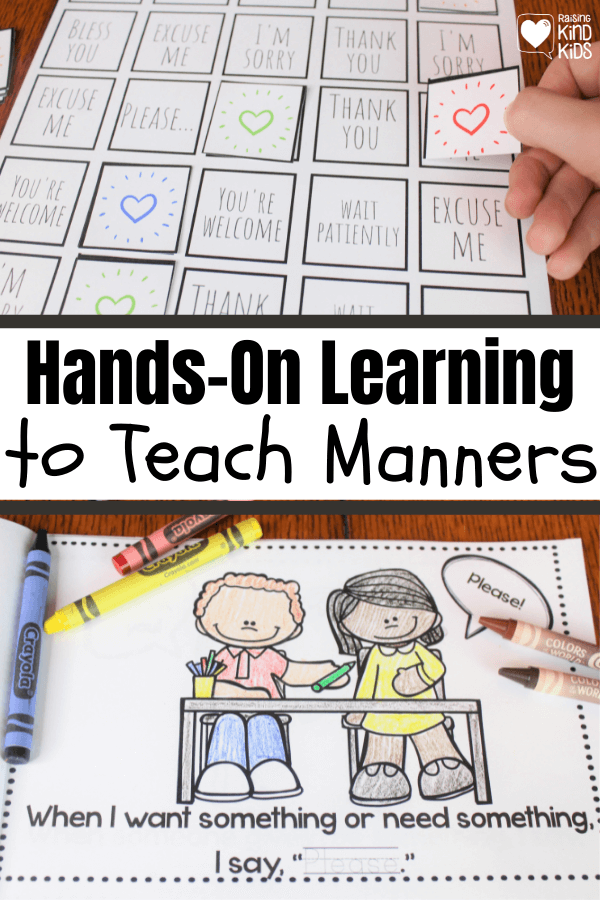
What’s Included in our Good Manners Bundle:
- Color Emergent Reader p.4-14
- Color Emergent Reader tracing p.26-36
- Color Emergent Reader write in p.48-58
- Black and white Emergent Reader p.15-25
- Black and white Emergent Reader -tracing p.37-47
- Black and white Emergent Reader – write in p.59-69
- Discussion Starters p.70
- Writing Prompts p.71-74
- Manners Bingo p.75-103
- Polite or Rude? Activity p.104-108
- Black and White Polite or Rude? P.109-113
How to Use our Good Manners Bundle:
1. Purchase and download our Manners Bundle.
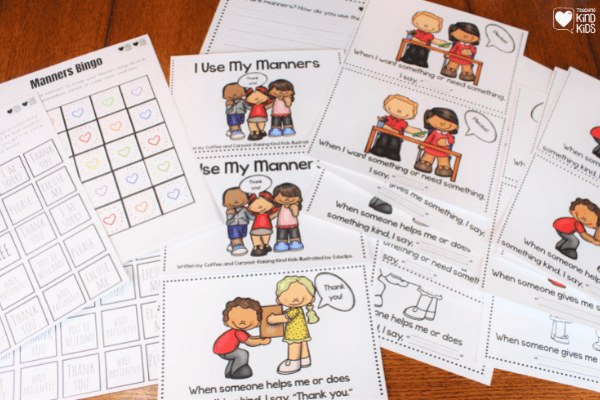
2. Start with our Interactive Emergent Reader. The bundle comes with three versions to choose from and each version comes in color or black and white:
- regular emergent reader
- tracing emergent reader
- fill in the blank emergent reader
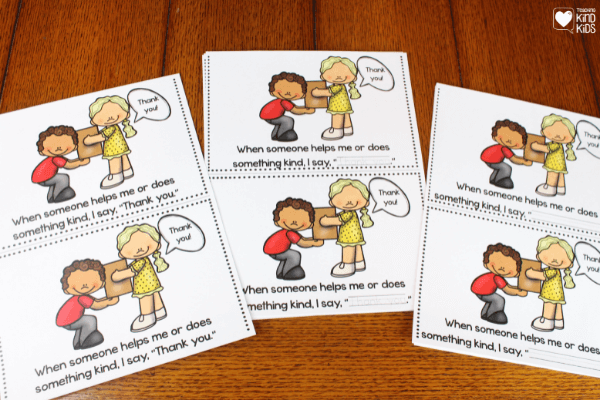
3. Cut apart the books and staple them together to make student books.
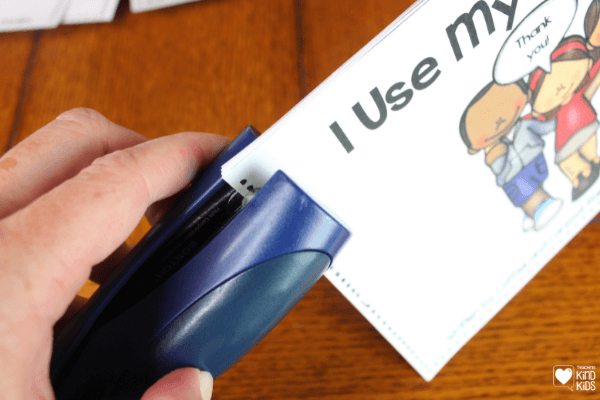
4. If you choose the tracing version, students can trace the manners words in the book.
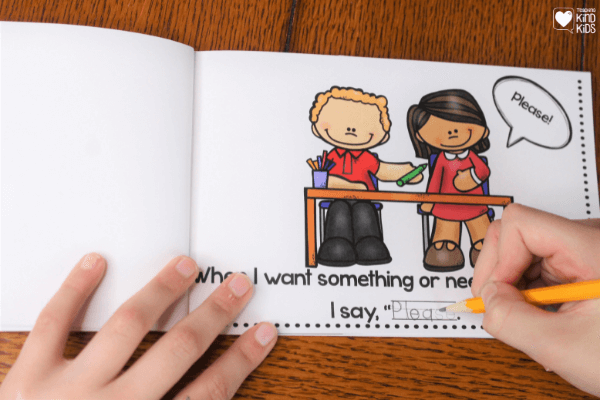
5. If you choose the fill-in-the-blank version, students can write in the manners words and copy the words from the speech bubble or from the board.
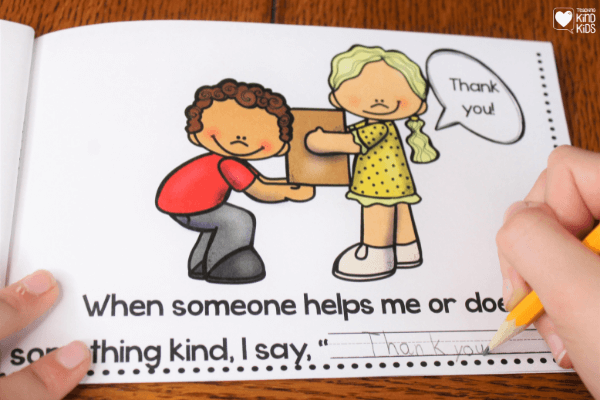
6. If you choose to use the black and white versions of any of these manners emergent readers, offer students skin color crayons so they can color with all the shades of brown.
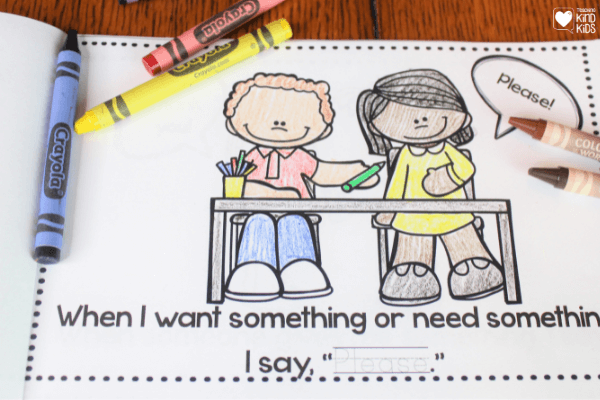
7. When the manners emergent reader books are colored, written in and stapled, read it in small groups, as a whole group, and encourage students to partner read, read to a stuffed animal, or read independently.
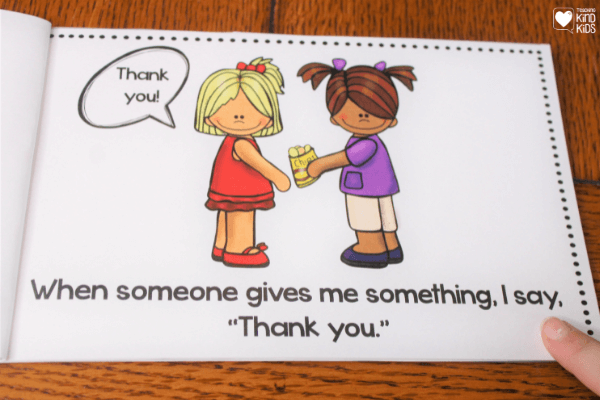
8. Continue the conversation about manners with our Discussion Starters. These are perfect during your Morning Meeting or when you have a few minutes before a bell rings if you don’t have dedicated character education time in your lesson plans.
You can also read book about Manners like these:
The Berenstain Bears Forget Their Manners
9. To encourage students to use their manners more often, you can play Manners Bingo. Print out the number of Bingo Boards you need and laminate them for durability.
Cut apart the heart “markers” to cover the squares or use coins, cereal, or any manipulatives you’d like.
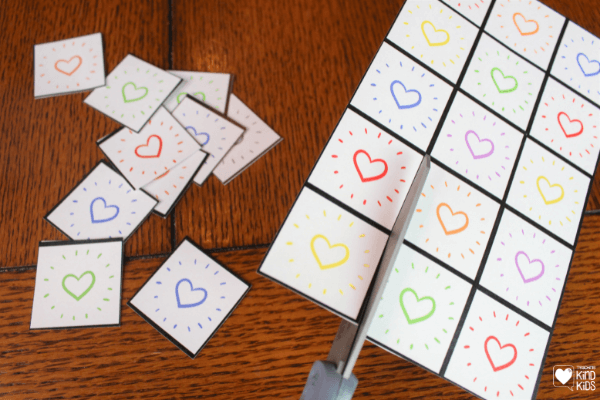
10. Use our 60+social situation list and read off one to your students. As a class, decide what manners word they should or could use in that situation (some situations could have more than one answer). If students disagree, it can be a great opportunity to discuss why or why not certain words should/could be said.
P.S. “Excuse me” is used when you ask for permission. “I’m sorry” is asking for forgiveness. We say “excuse me” before doing something that might inconvenience someone. We say “I’m sorry” after having inconvenienced someone.
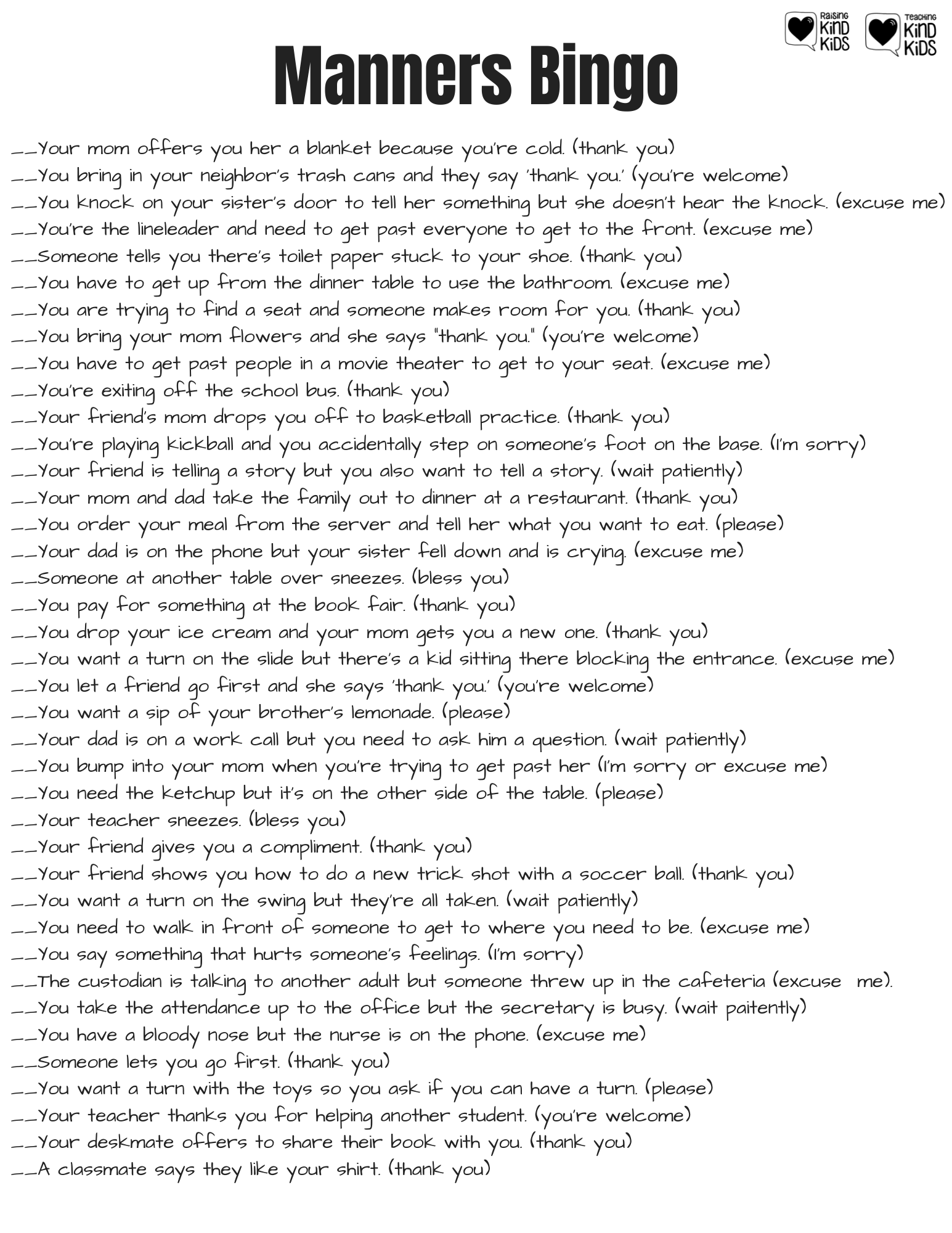
11. Once they determine what they should say to be polite, they’ll cover that square with a marker. 5 in a row wins, or you could play “X” or blackout to keep the game going.
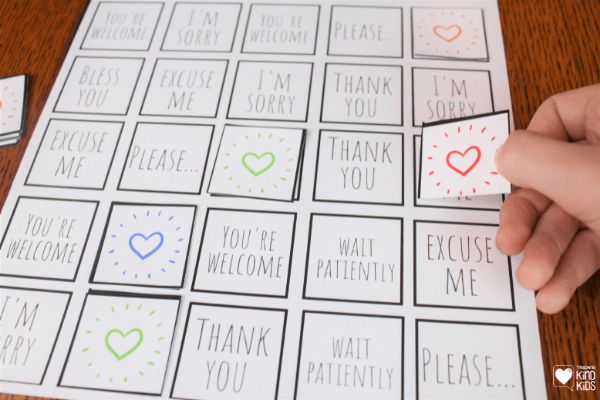
12. To connect this social-emotional learning to writing standards, students can use our writing prompts to write what they know about being polite and having good manners.
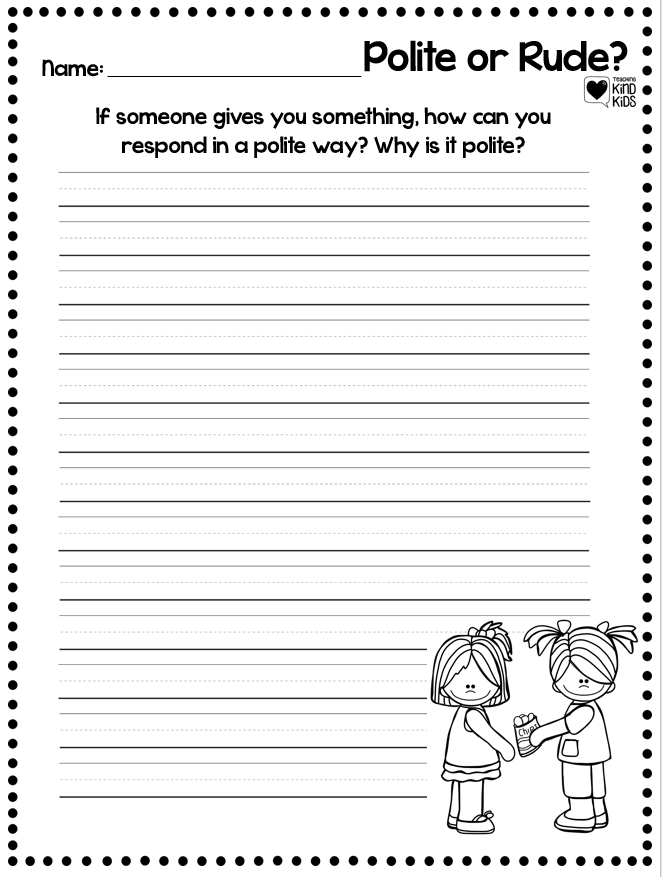

13. To show their understanding of what is polite and what is not, students can complete our Polite or Rude worksheet that also comes in color or black and white.
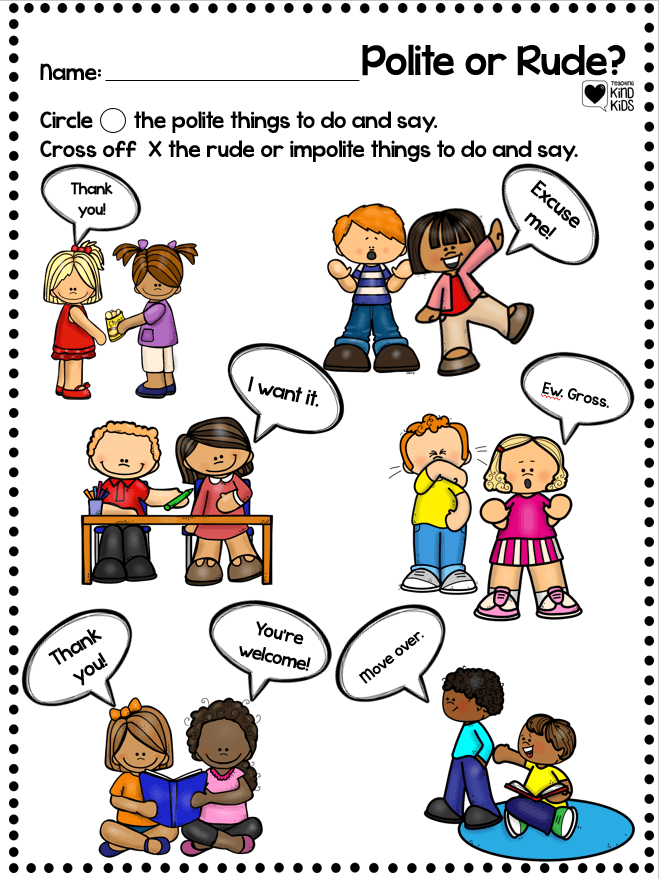
Manners are just one part of being kind, but they are an important, teachable skill we can introduce to our students. Thank you!
Ready to have more Polite Kids? Grab our Manners Activity Bundle here!
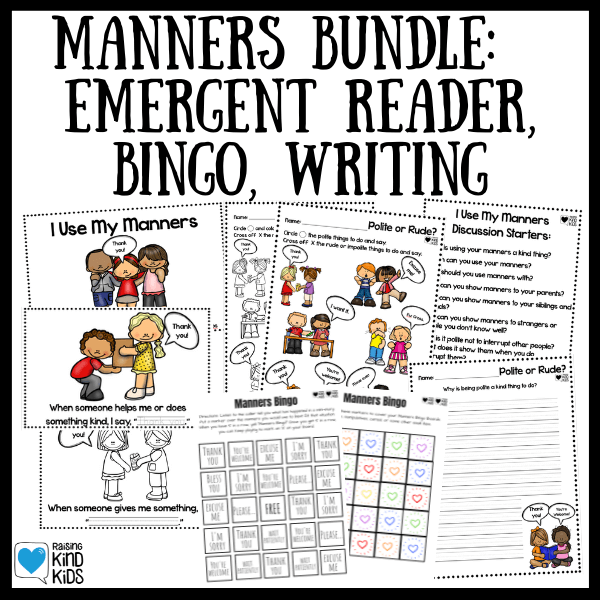
Get it in our online store.
Get it on Teachers Pay Teachers.

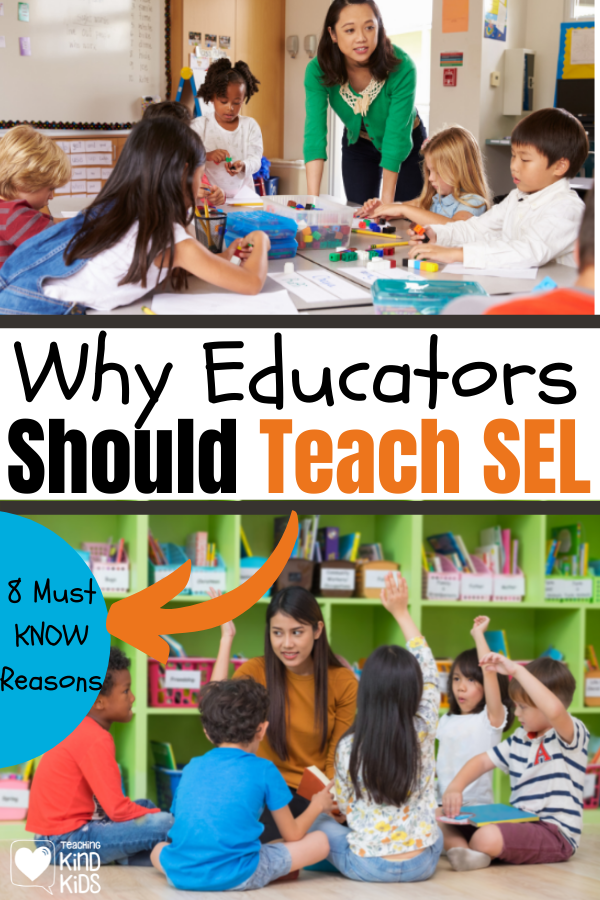

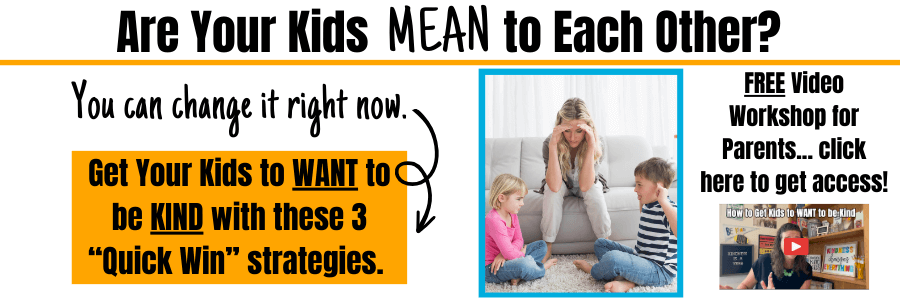

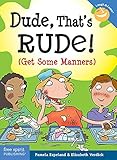

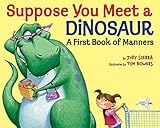
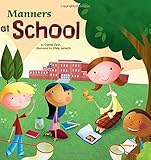
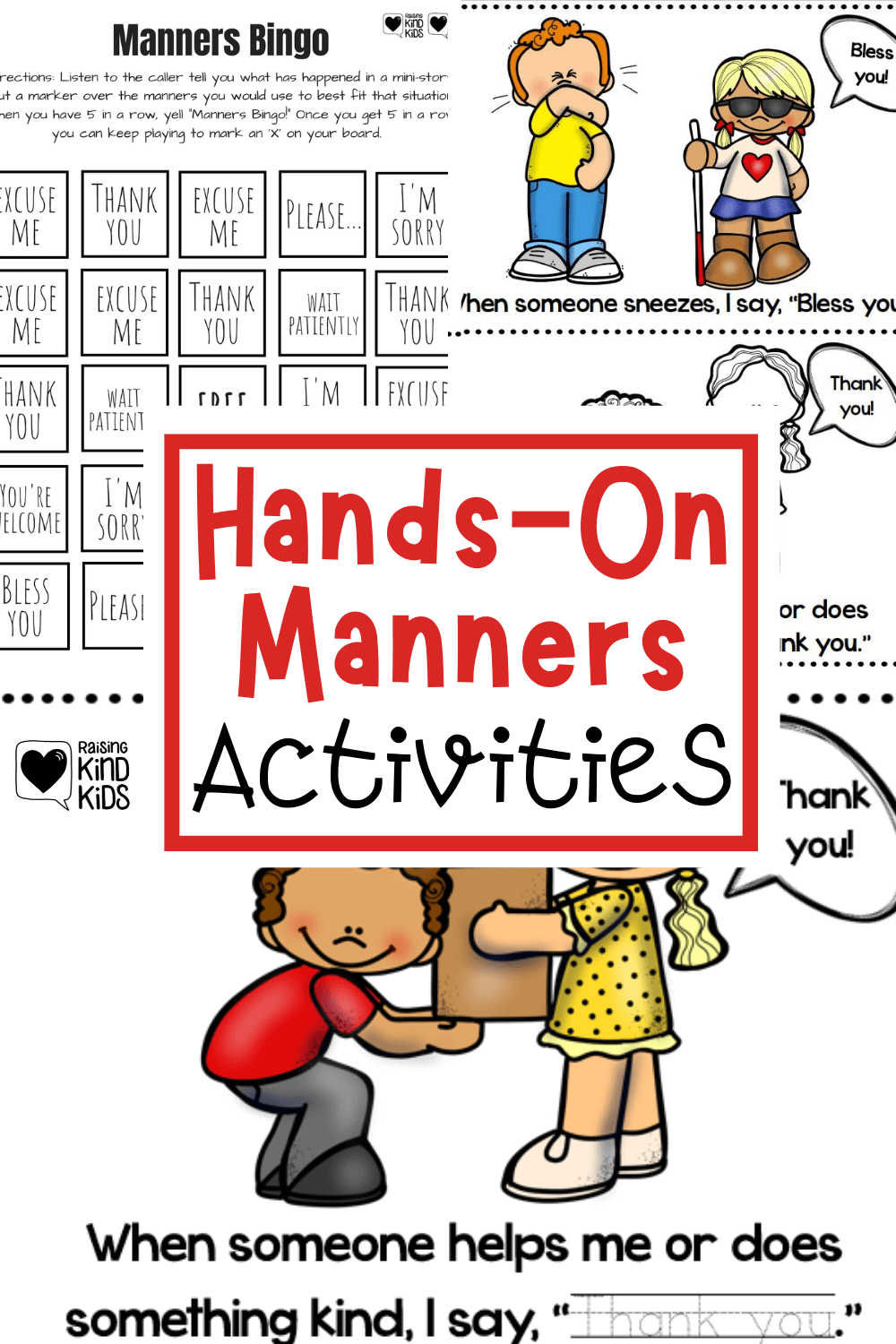
Leave a Reply